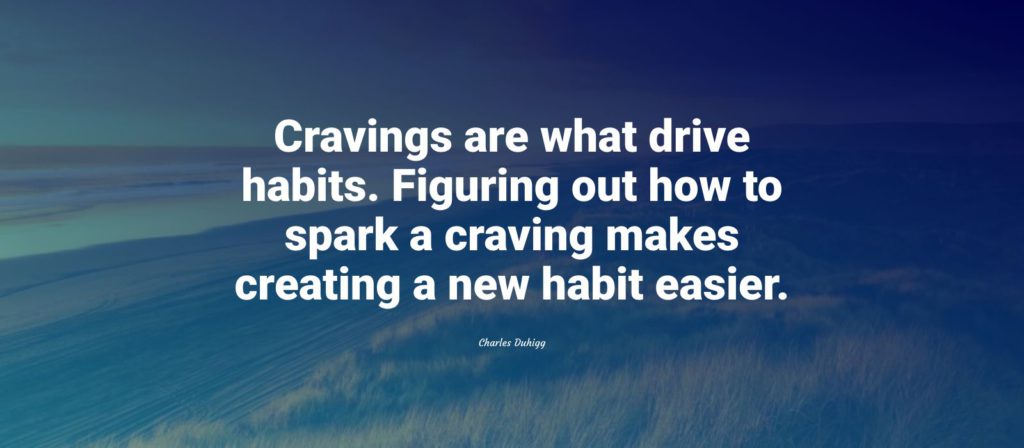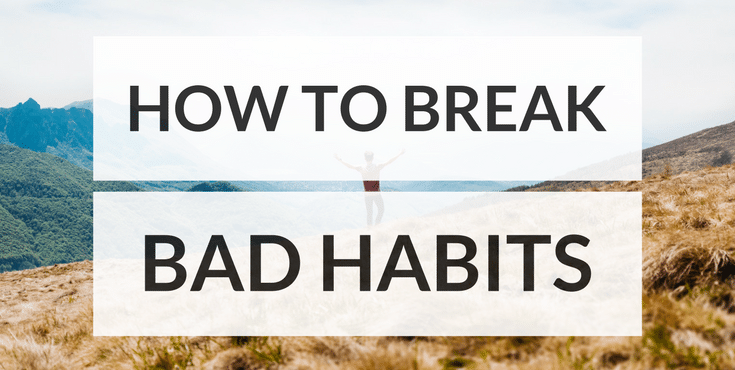Everyone acts according to habit.
In fact, our routine actions make up a large percentage of what we do every day. While on the surface you might think that is a recipe for failure, in fact it is extremely empowering.
Habits play an essnetial role in helping our brains to manage the constant stream of information and options available to us. By zero-ing in on repeated tasks and making them automatic, we free our minds to handle more complex and interesting things to do.
This means that our habits drive our daily actions at a very deep level. When you have good habits, you put yourself in a position to create success and wellness for yourself.
Learn more about common habits for success.
But…this also means you might find it difficult to stop bad habits, even when you know they’re not good for you.
In this post we’ll talk about how to break bad habits and form good ones in their place.

How To Change Bad Habits
First, let’s go through what it takes to change a bad habit.
Habits are literally hardwired into your brain. Every time you repeat an action, you strengthen the habit. To break a bad habit, then, you need to not only stop doing the negative action, but also replace that habit with a better alternative.
According to habit experts James Clear and Charles Duhigg, you are far more likely to successfully stop a bad habit if you have an alternative ready to go.
The reason?
Habits always come after triggers in your environment. Whether you know it or not, you are constantly being triggered into tiny little routine actions. So, the first step to changing a bad habit is to identify the trigger you want to change. Ask: what always happens, right before I do this bad habit?
That’s the inflection point you really want to shift.

Need some motivation? Try this 60-minute routine for morning motivation, productivity, and peak performance.
How To Form Good Habits
Forming a good habit, then, is about redirecting your actions after the trigger occurs. For some triggers, you may be able to remove yourself from the environment, or create a new, positive trigger that pushes you into a better habit.
But, often, the best way to adjust your behavior in the long run is to learn to reprogram your brain to replace your bad habit with a good one, even when you are faced with the same initial trigger.
Did you know… Studies show that reinforcing positive habits, like keeping a daily affirmation journal, even for just a few weeks, can have huge payoffs that increase your feelings of happiness and well-being for months, even if you stop the habit later.
The first few times you do this, the task can seem monumental, but try to build momentum long enough for it to begin to come more naturally to you.

Here are a few tips:
- Start Small. Don’t try to solve your health crisis by running a marathon. Start by putting on your walking shoes and just getting outside. Once you establish yourself into a new routine, you can focus on improving and refining into your ultimate goal.
- Be Consistent. Learn to become acutely aware of your trigger, and remember to prioritize your new action. When you start, it is easy to think, “oh this one time won’t hurt,” but recognize that every time you reinforce your old habit instead of your new one, you’re settling more deeply into well-worn patterns of behavior.
- Reinforce and Reward Positive Outcomes. Lastly, do whatever it takes to create a positive outcome or reward for yourself. For some habits, this reward might originate naturally within the habit itself (for example: you will feel better after exercising), but for others (like saving for retirement), the external reward might be far off. You need to reward your discipline in the moment, in order to create a positive drive to propel you into maintaining the habit in the long run.
Click here to learn more about easy habits that will increase your overall happiness.
Or, try these 10 habits for daily spiritual growth.




